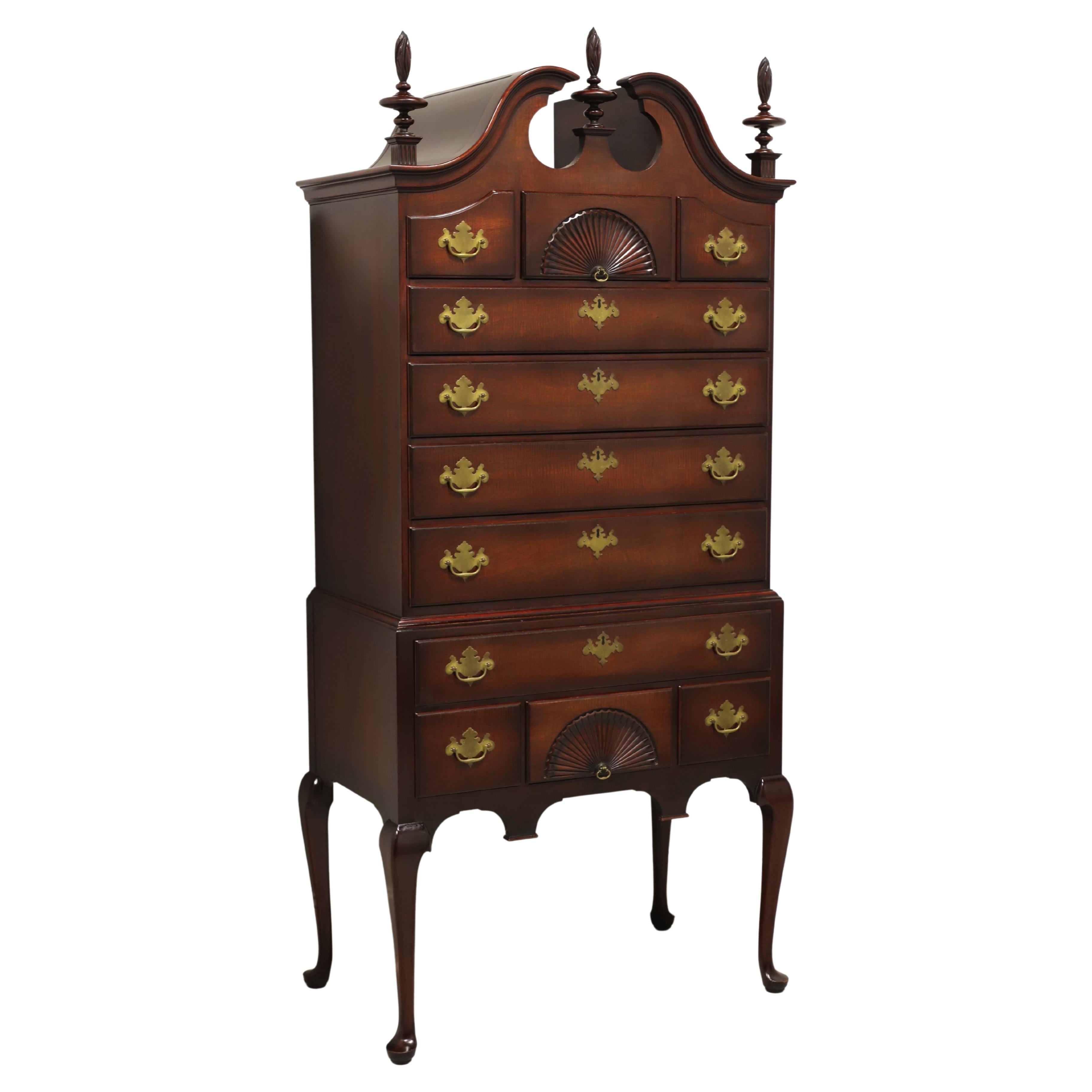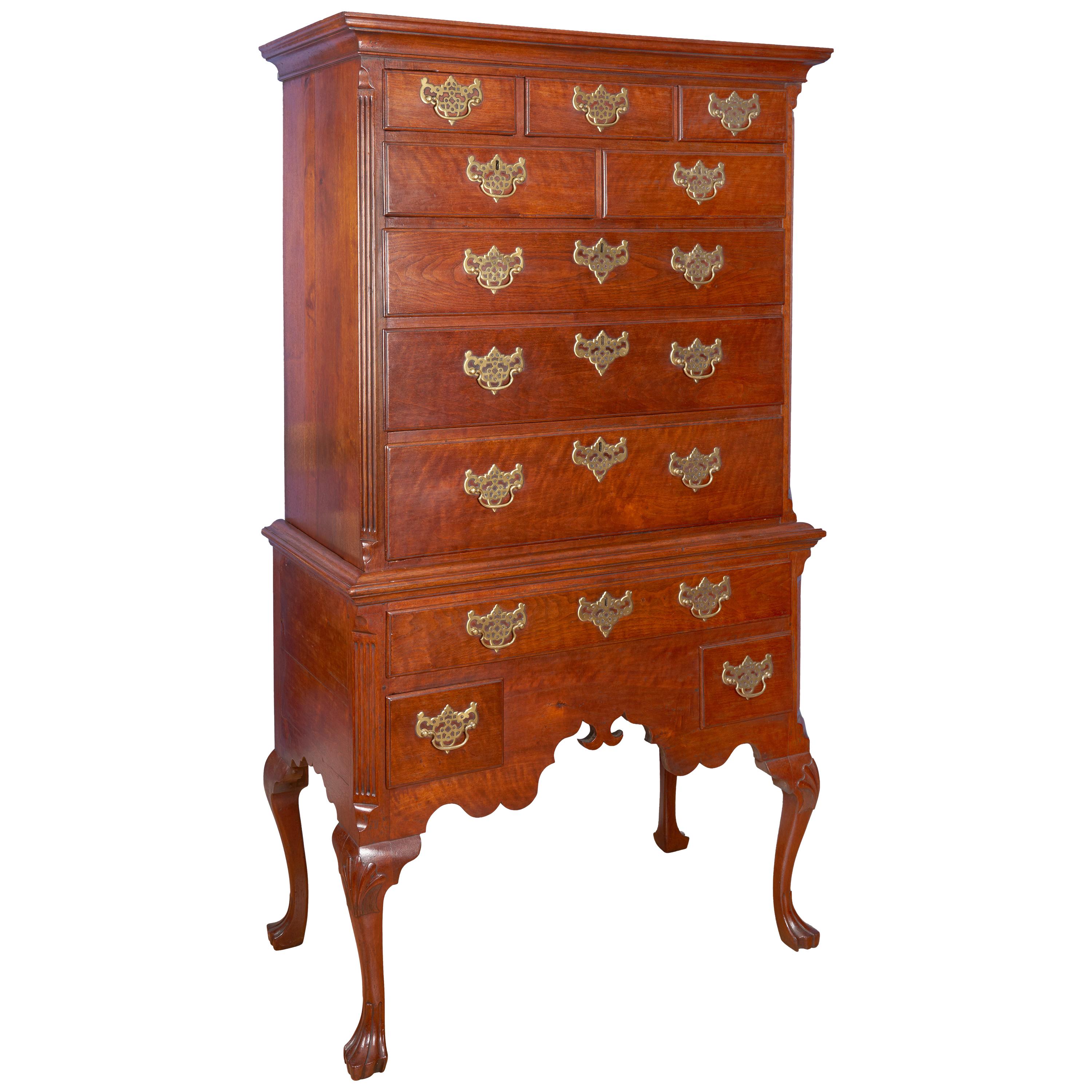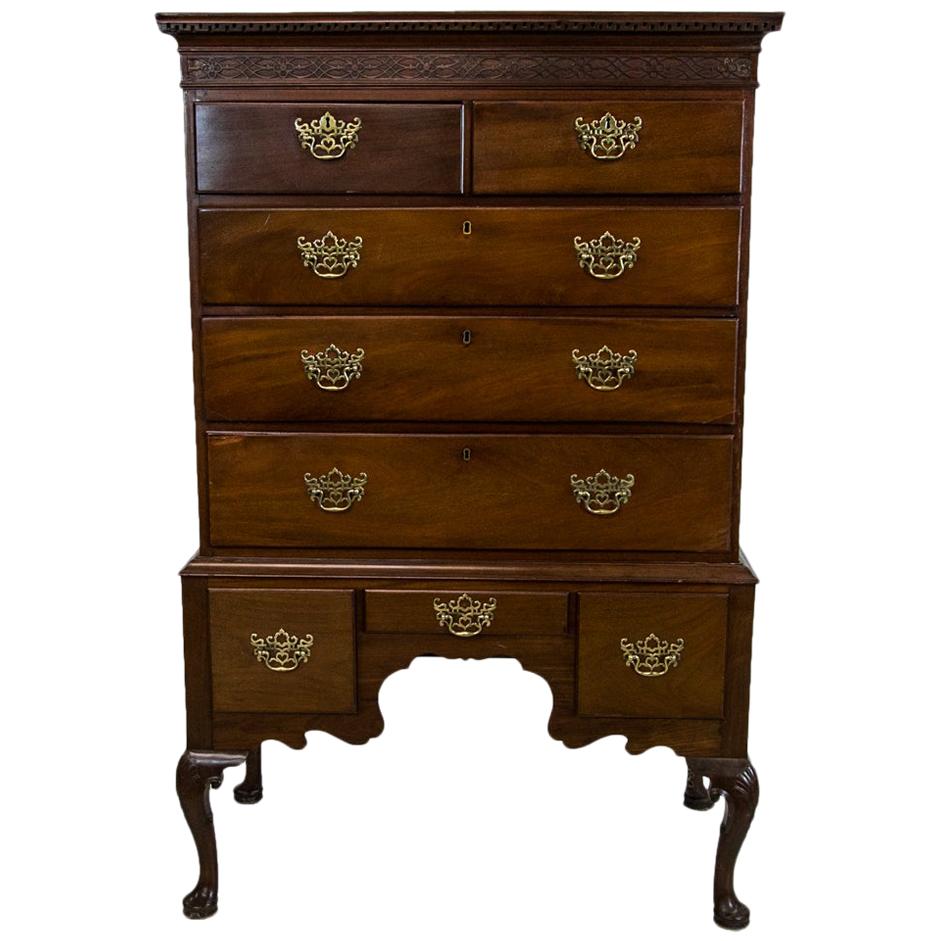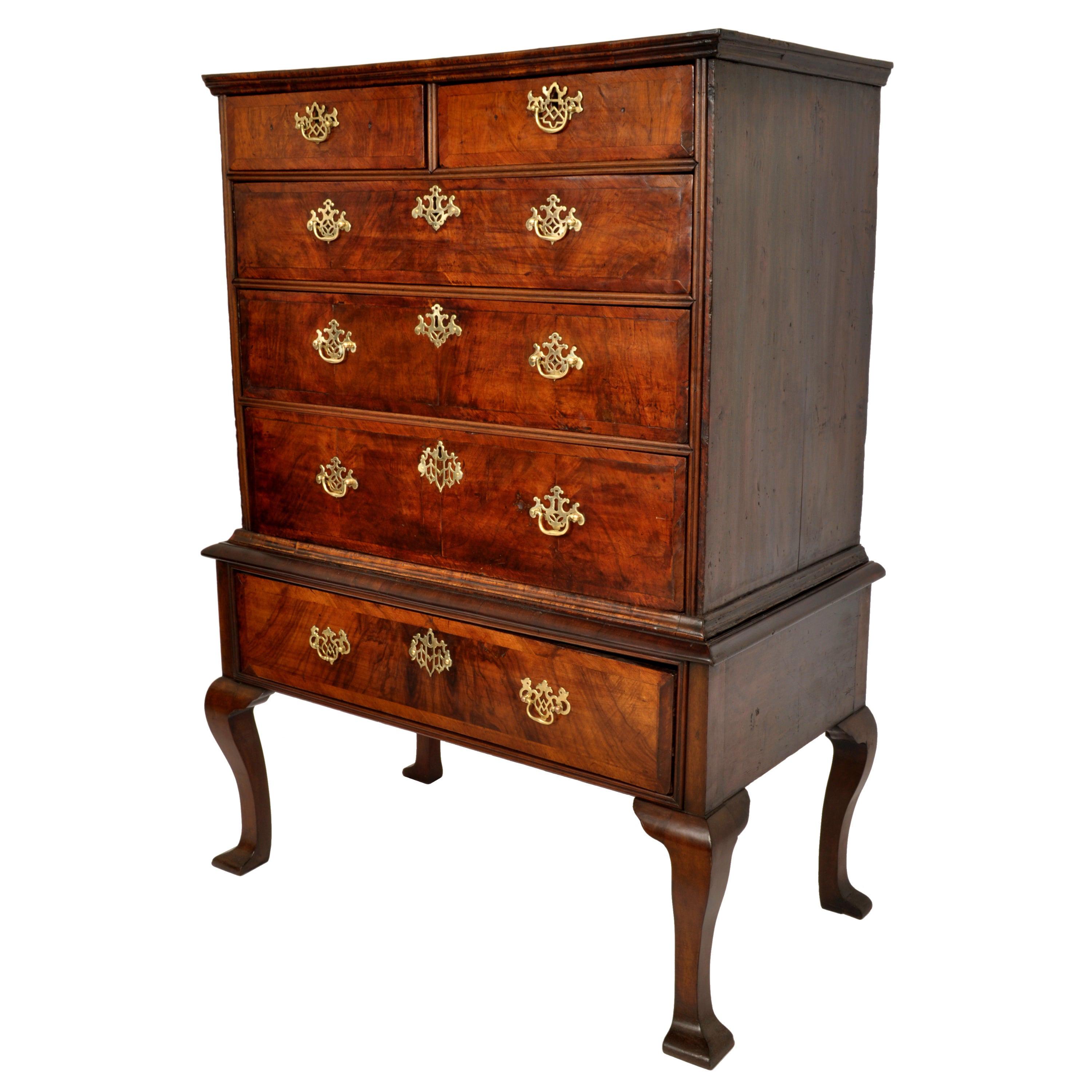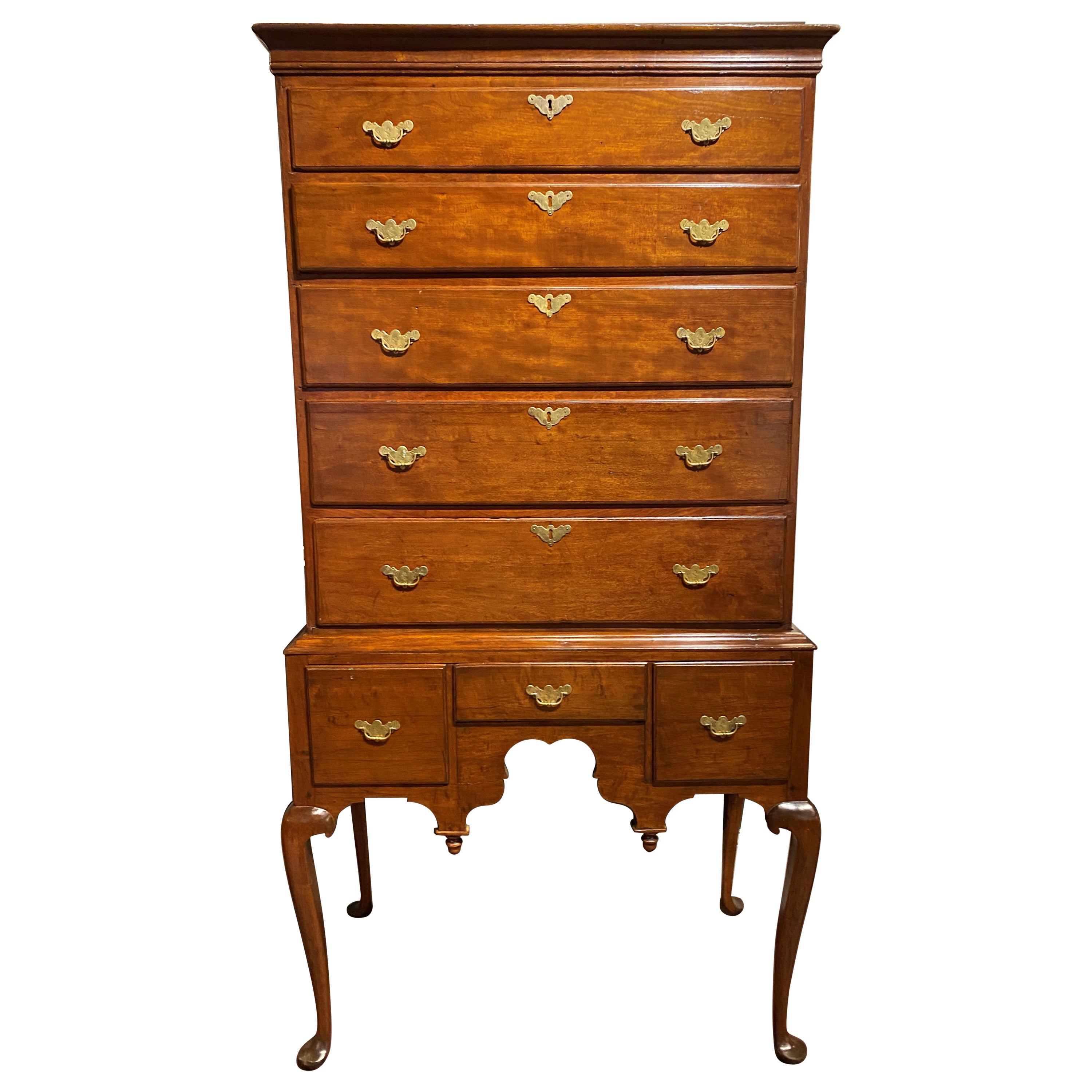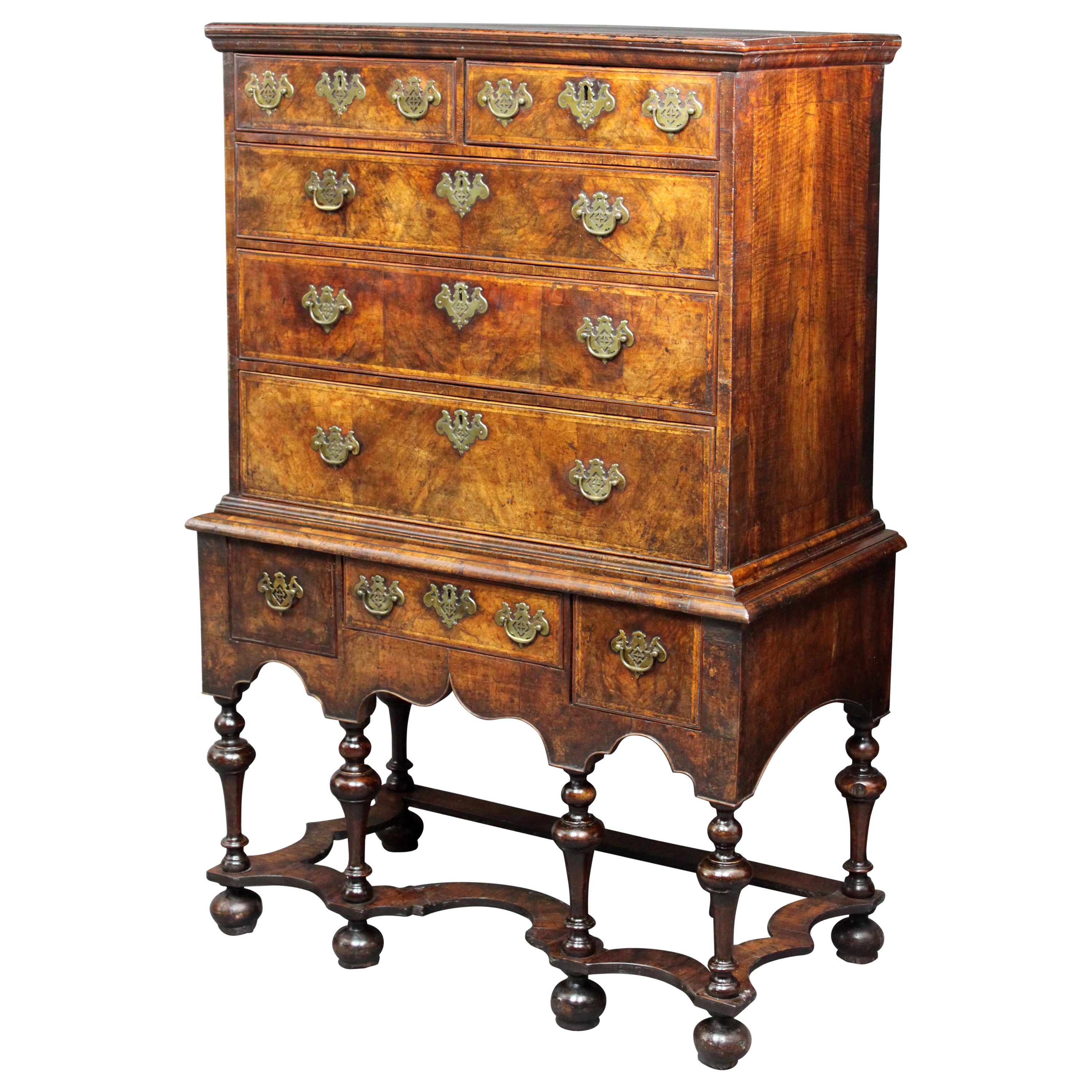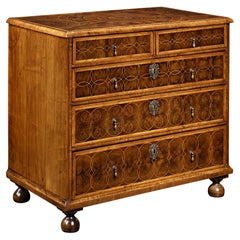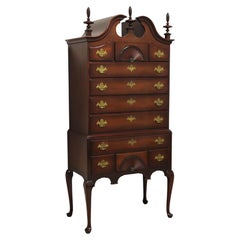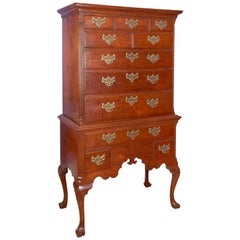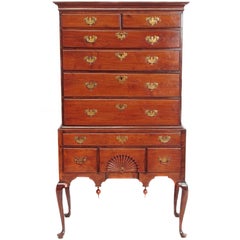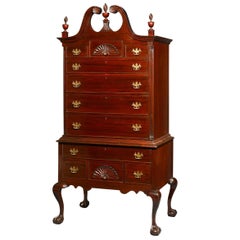
Queen Anne Highboy Chest
View Similar Items
Want more images or videos?
Request additional images or videos from the seller
1 of 5
Queen Anne Highboy Chest
About the Item
- Dimensions:Height: 84 in (213.36 cm)Width: 42.75 in (108.59 cm)Depth: 26 in (66.04 cm)
- Style:Queen Anne (Of the Period)
- Materials and Techniques:
- Place of Origin:
- Period:
- Date of Manufacture:circa 1850
- Condition:
- Seller Location:New Orleans, LA
- Reference Number:Seller: 28-50181stDibs: LU89116899063
About the Seller
5.0
Recognized Seller
These prestigious sellers are industry leaders and represent the highest echelon for item quality and design.
Established in 1912
1stDibs seller since 2010
92 sales on 1stDibs
Typical response time: 5 hours
More From This SellerView All
- Queen Anne Silver Feeding Cup by John EastBy John EastLocated in New Orleans, LAThis extremely rare, Queen Anne-period silver feeding cup gives a glimpse into the daily life of 18th-century, England. Crafted by silversmith John East, this subtly designed covered cup would have held broth or thin porridge to nourish a young child or an invalid. Its two handles and a spout make feeding easy and a CAP attached by chain closes securely over the spout’s opening. The removable cover could have been used to spoon feed a patient as well. Although it is common to find feeders made of ceramic or porcelain, to find a silver cup, especially from the 18th century, is an incredible find. The base of the feeder displays the contemporary initials “M W” around a star shaped motif. Hallmarked London, 1712 Measures: 5” wide over handles x 4 5/8” deep over spout x 3 ¾” high In use from the Roman era right up to WWII, the invalid...Category
Antique 18th Century English Queen Anne Sterling Silver
MaterialsSilver
- William and Mary Oysterwood ChestLocated in New Orleans, LAThis William and Mary-period chest is distinguished by oyster veneering and circular inlay. Intersecting circles are inlaid into the veneers on the drawer fronts and on top of the ch...Category
Antique 17th Century English William and Mary Commodes and Chests of Dra...
MaterialsBronze
- 18th Century English SecretaryLocated in New Orleans, LAQueen Anne period furnishings such as this walnut secretary are incredibly rare and important examples of English cabinetmaking. This secretary is of the most outstanding caliber, boasting desirable double bonnet, mirrored cabinet doors...Category
Antique 18th Century English Queen Anne Secretaires
MaterialsWalnut
$88,500 - Louis XVI Commode by Pierre RousselBy Pierre RousselLocated in New Orleans, LAMatchless style and high-quality craftsmanship are the hallmarks of Pierre Roussel's furniture, and this exceptional Louis XVI-era commode epitomizes this master craftsman's skill. Crafted of rosewood veneer with a violet wood frame and intricate parquetry inlay, the cabinet's graceful design is also highly practical. The compact form holds two drawers, one of which can be locked for added security. A specimen of marble provides the perfect surface, while bronze ormolu mounts add an additional hint of luxury to the drawers and body. Elegantly curved cabriole legs with bronze ormolu shoes complete this impeccable piece. Known for his superior craftsmanship, Roussel was a highly respected maître ébéniste of the 18th century. His furniture pieces were favoured by grand patrons such as the Prince de Condé and the Princess of Monaco...Category
Antique 18th Century French Louis XVI Commodes and Chests of Drawers
MaterialsMarble, Bronze
- King George I Ambassadorial Secrétaire-CabinetLocated in New Orleans, LAThis highly important secrétaire-cabinet was crafted for and specially ordered by King George I for the British Ambassador to Russia. From its craftsmanship and materials to its exceptional artistry, it is a work of royal and historic significance that exudes power in each and every detail. The broken pediment at its apex features the simplified royal coat of arms bearing the king’s crown, while the interior is adorned by portraits of the British Royal Family. Placed within the ambassador’s St. Petersburg home, this entirely unique piece of furniture would have been a potent reminder of England's grandeur and political importance. Relations between England and Russia during this period were at an all-time high. Peter the Great had traveled to England in 1698 as part of his widely known “Grand Embassy” tour, wherein he attempted to gain foreign support against the Ottoman Empire. He spent a period of nearly four months there, meeting with King William III and his court on numerous occasions. Noted academic Arthur MacGregor wrote concerning the impact of the trip, “For two decades following Peter's visit, British influence in Russia reached a peak. It manifested itself in social custom, in craft practice and in ships and naval organization... it reached a significant sector of the population before relations cooled once again and the two nations pulled back from this era of unprecedented cordiality.” First and foremost, however, it is a reminder of British might and influence. By the reign of King George I, England had come into its own as a world power. Unique in its design, this cabinet is a reflection of the country’s might. It is crafted from the highest-quality solid walnut and burr walnut adorned by gilded lock plates and engraved hinges. The presence of ormolu at its apex and lining the doors was a rarity for this period, and its addition makes manifest the importance of the design. The outer doors open to reveal multiple interiors, including fifteen separate drawers around a central cupboard; the cupboard doors each bear mezzotint portraits of George I and his father, Ernest Augustus, Elector of Hanover. An etching after the portrait of George I dating to circa 1716 is in London’s Royal Academy. A second, inner pair of doors are adorned by mezzotints of the Prince and Princess of Wales (later Queen Caroline and George II), which are both after portraits by Sir Godfrey Kneller dated 1716 in the Royal Collection. A final portrait is revealed on the very interior of the cabinet, where a mezzotint of Frederick, Anne, Amelia and Caroline, children of the Prince of Wales, resides. An etching (circa 1715-1720) after this portrait can be found in the National Portrait Gallery (London). Apart from its abundance of royal portraiture, the cabinet features stunning painted decoration, including floral designs as well as clouds, birds and trees in a bucolic motif reminiscent of Eden. Its lower portion is a study in both form and function, featuring a fitted secrétaire-drawer above three additional drawers for storage. The cabinet appears in The Shorter Dictionary of English Furniture by R. Edwards from 1964, a text that is regarded as the bible of British furniture design. Edwards describes it as a “writing cabinet...given by George I to the British Ambassador at the Russian court.” The cabinet was likely made for the 18th-century German diplomat and writer Friedrich Christian Weber, who represented English interests at the Russian court from 1714 until 1719. Although Weber’s tenure as ambassador was relatively short, while in St. Petersburg, he authored his account entitled Das veraenderte Russland (The Present State of Russia), which was published in three volumes in 1721, 1739 and 1740. It may, however, also have been made for George Douglas, 2nd Earl of Dumbarton, who served as ambassador alongside Weber in 1716. Diplomatic relations ceased between the two countries in 1721. In 1928, the cabinet appeared for sale at the International Exhibition of Antiques & Works of Art in Olympia. It had previously been in the collection of the Woltner family of Bordeaux, the celebrated vintners who owned the estate Château Laville Haut-Brion and produced wine of the same name. According to the family, Monsieur Woltner was given the cabinet as a gift from an aunt who lived in Russia for many years. After leaving the Woltner collection, the cabinet was acquired by William Berry...Category
Antique 18th Century English Georgian Secretaires
MaterialsBrass
- 19th Century French Vitrine by Francois LinkeBy François LinkeLocated in New Orleans, LAThis rare and stunning vitrine was crafted by the illustrious French ébéniste François Linke. A master of the Louis XVI style, Linke was renowned for his highly original designs t...Category
Antique 19th Century French Rococo Vitrines
MaterialsBronze
You May Also Like
- KINDEL Mahogany Queen Anne Style Highboy ChestBy Kindel FurnitureLocated in Charlotte, NCA Queen Anne style highboy chest by Kindel Furniture, of Grand Rapids, Michigan, USA. Solid mahogany with brass hardware; complimented by brok...Category
Mid-20th Century American Queen Anne Commodes and Chests of Drawers
MaterialsBrass
- Queen Anne Walnut HighboyBy William SaveryLocated in West Chester, PAFinely grained wood, chamfered fluted corners, fishtail skirt. Cabriole legs with shells on knees terminating in bold trifit feet. Descended in the Scull family of Philadelphia. Attributed to William Savery...Category
Antique 18th Century American Queen Anne Commodes and Chests of Drawers
MaterialsWalnut
$47,000 - Connecticut Queen Anne Flat-Top "Highboy" High ChestLocated in Dallas, TXA cherry "highboy"/high chest of drawers, circa 1770, with long graceful shaped cabriole legs and pad feet, shaped apron both front and sides, four (4) drawers in base / bottom, five...Category
Antique Late 18th Century American Queen Anne Commodes and Chests of Dra...
MaterialsBrass
- Queen Anne American Cherry Bonnet Top Highboy, 18th CenturyLocated in Savannah, GAQueen Anne American Cherry Bonnet top highboy, 18th century.Category
Antique 18th Century American Commodes and Chests of Drawers
MaterialsCherry
- Queen Anne Style Painted HighboyLocated in Westwood, NJQueen Anne Style painted high boy, a unique chest that boasts a bouquet of carved roses two inches deep in a luxurious Danish blue finish on its pediment....Category
21st Century and Contemporary Vietnamese Queen Anne Commodes and Chests ...
MaterialsWood
$10,825 / item - LINK-TAYLOR Heirloom Solid Mahogany Queen Anne Style Highboy ChestLocated in Charlotte, NCA highboy chest in the Queen Anne style made by Link-Taylor, from their Heirloom Gallery. Solid mahogany with brass hardware, a full pediment top, center finial, cabriole legs and pa...Category
Late 20th Century American Queen Anne Commodes and Chests of Drawers
MaterialsBrass
Recently Viewed
View AllMore Ways To Browse
Queen Anne Antique Chest Of Drawers
Queen Anne Chest On Chest
Queen Chest Walnut
Queen Anne Walnut Chest
Chest On Chest Highboy
Antique Highboys
Antique Highboy
Antique Highboy Furniture
Highboy Antique Furniture
Highboy Antique
Queen Anne Walnut Chest Of Drawers
Carved Highboy
Century Queen Anne Walnut Chest
Ball And Claw Chest
Antique Highboy Chest Of Drawers
Queen Anne Ball And Claw
Mahogany Highboy Chest
18th Century Highboy
